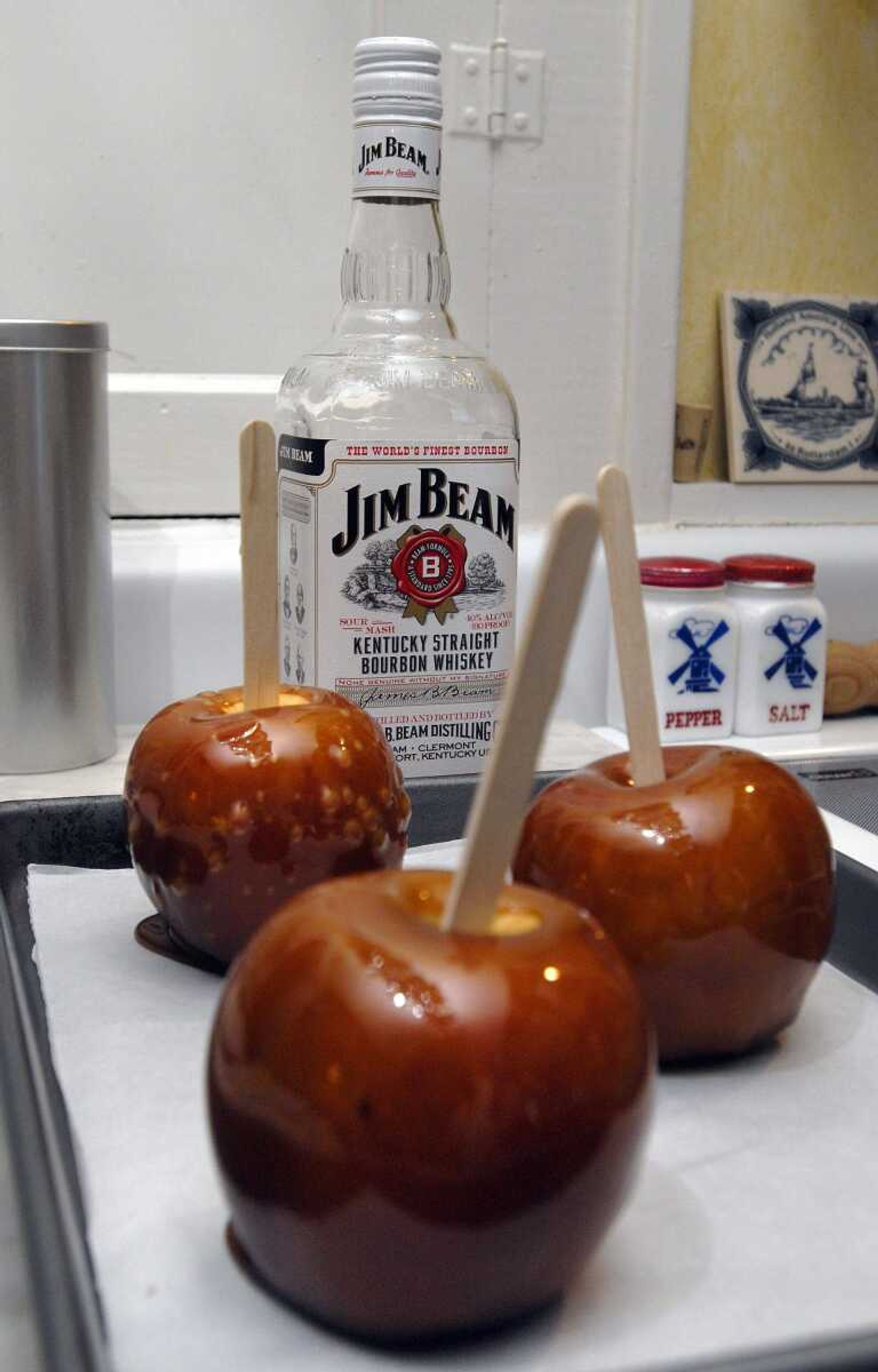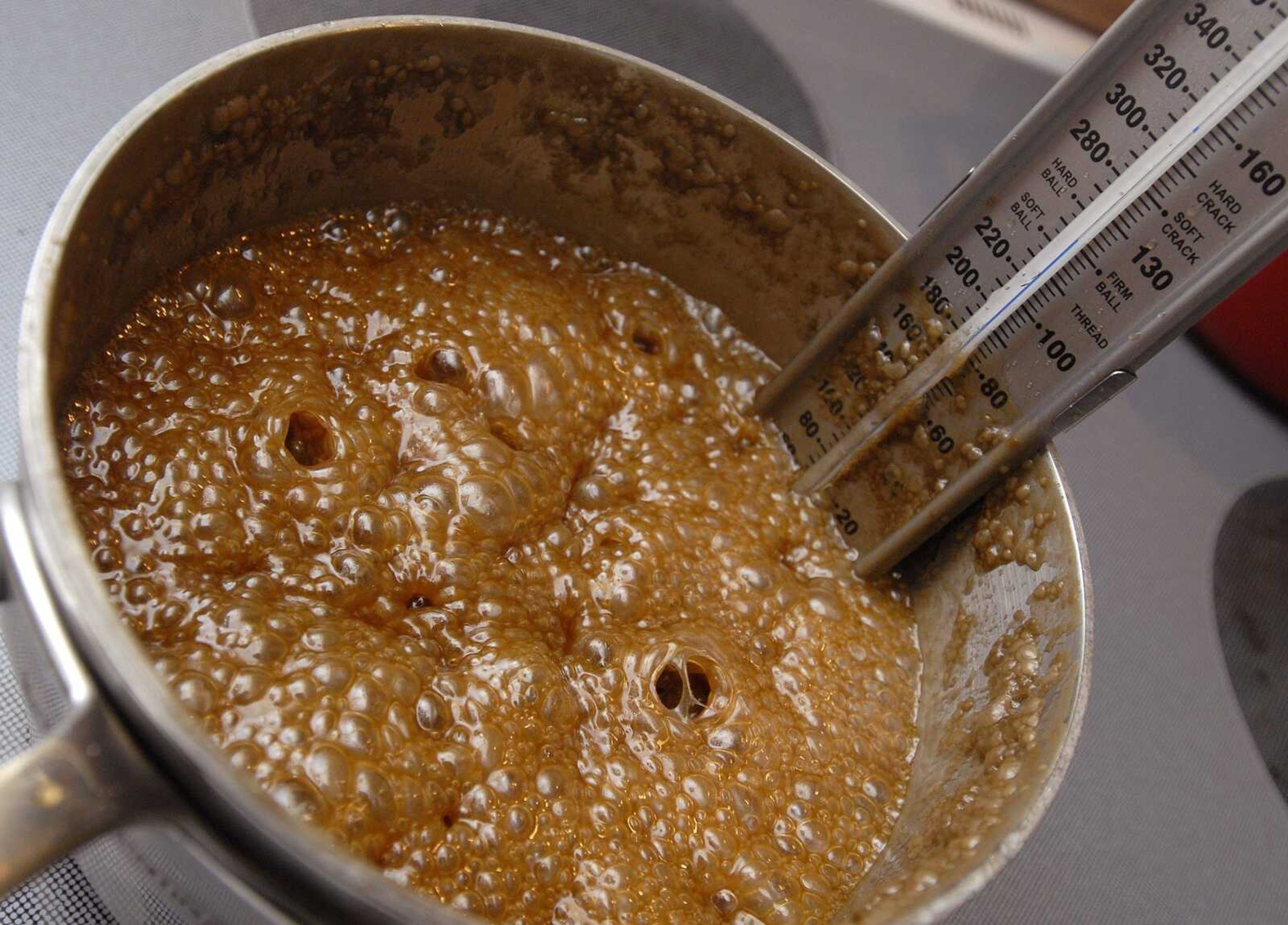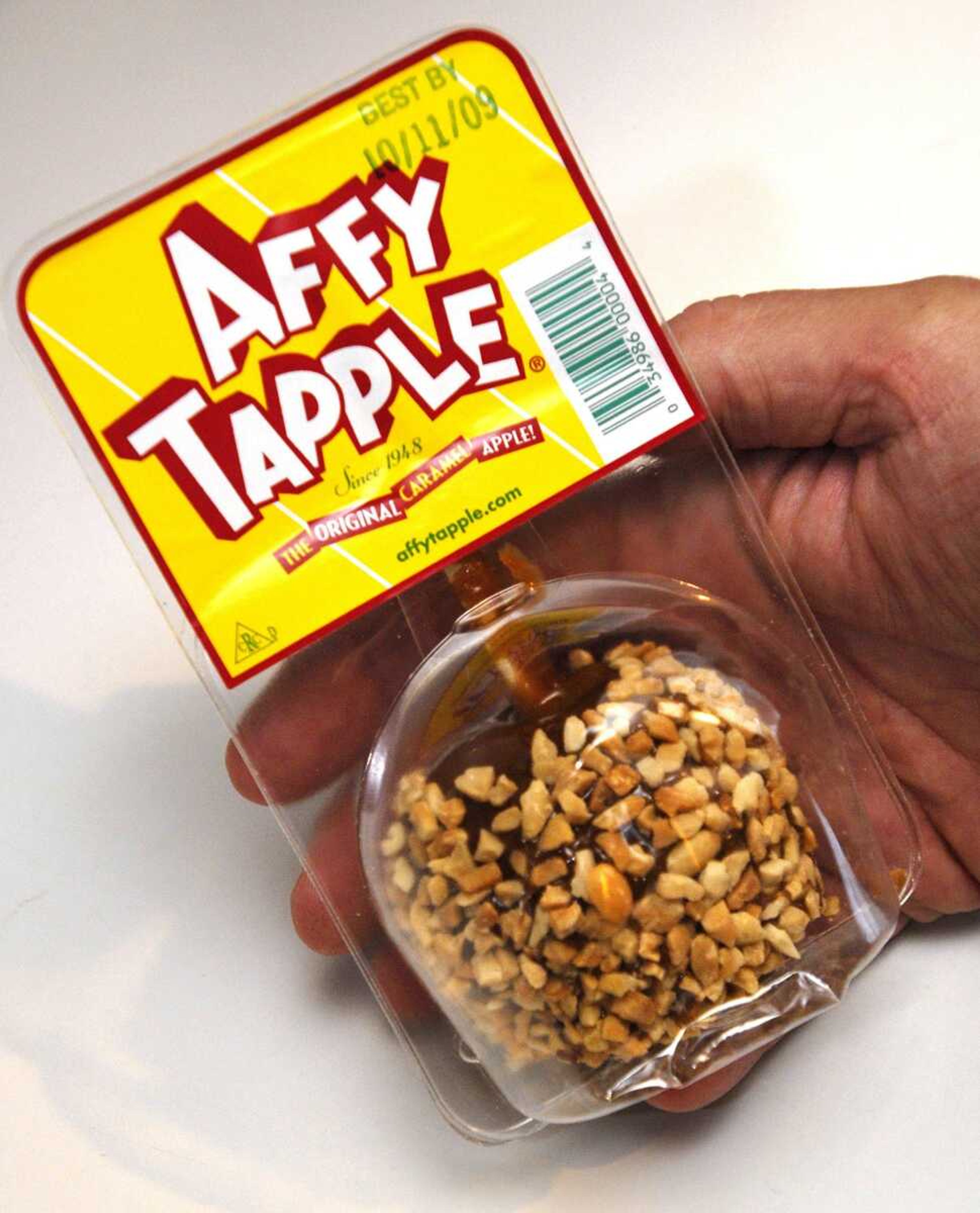A Harte Appetite: Caramel apples with bourbon make for a grown-up confection
Do you have some gold jewelry that needs polishing? Try using beer. Is your hair frizzy and in need of conditioning? Try using olive oil. Have some plants that need fertilizing? Try using coffee grounds. These are just a few examples of the proven alternative uses of some common food items...
Do you have some gold jewelry that needs polishing? Try using beer. Is your hair frizzy and in need of conditioning? Try using olive oil. Have some plants that need fertilizing? Try using coffee grounds. These are just a few examples of the proven alternative uses of some common food items.
But of all the foodstuffs that have applications beyond the culinary, perhaps the most imaginative involves caramel. In addition to providing the basis for sinfully rich, sticky, gooey confections, it can also be used as a depilatory. In fact, food historian Maguelonne Toussaint-Samat tells us that was one of its original uses -- in the harems of Arabia.
Even before the invention of Nair and the electric shaver, this has to have been one of the most regrettable wastes of food ever. For whatever else it may be capable of, it's a shame to do anything with caramel except savor it.
Caramelization, as Harold McGee, the world-renowned authority on the chemistry of foods, explains is simply what happens when sugar is heated to the point that its molecules break apart. But that scientific description does not do justice to the complexity and depth of flavor that results.
Whether it's used as a coating for nuts or popcorn, turned into a sauce by the addition of cream or butter, cooked to the firm ball stage to get a chewy candy or all the way to the hard crack stage to create toffee, there are few treats more luscious in my judgment -- except, possibly, chocolate or better yet a combination of the two. I'm not surprised, therefore, that Milton Hershey's first venture into the candy trade involved making caramels. It was only when he sought to dress them up that he got into the chocolate business.

Perhaps the ultimate caramel confection is the caramel apple, the Halloween treat that outclasses any mere candy bar. Its precursor was the candy or candied apple covered not in caramel but in a hard, crackly sugar coating often flavored with cinnamon and tinted red.
Though dipping fruits in sugar syrup goes back to ancient times, the origin of the red candy apple goes back only to 1908 when William W. Kolb, a candymaker in Newark got the idea to dip apples into a red cinnamon candy mixture he had on hand. Soon after he put them on display in his shop window they became a sensation.
Only later did dipping apples in hot caramel, as opposed to sugar syrup, become the rage. Some historians claim the caramel apple only goes back to the early 1950s, and they credit a Kraft Foods salesperson by the name of Dan Walker with the invention. The recipe is still printed on the back of every bag of Kraft caramels.
But the Chicago-based Affy Tapple Co. maintains it invented the true caramel apple somewhat earlier, in 1948. They still claim to manufacture the "Original Caramel Apple." Around 1960 another Chicagoan, Vito Raimondi, invented the first caramel apple machine. It inserts the stick into the apples, bathes them in caramel and even garnishes them with chopped nuts if desired.
Thanks to Mr. Raimondi, American candy companies can produce enough caramel apples to give everybody one a day. That might keep the doctor away, though probably not the dentist.

Bourbon Caramel Apples
Making these caramel apples is child's play, but with the addition of bourbon the result is a decidedly grown-up confection.
8 small apples
2 cups light brown sugar
1 cup bourbon
1/3 cup light corn syrup
1/2 cup cream
4 tablespoons butter
Wash and dry apples and remove stems. Insert craft sticks into stem ends of apples and set aside. Combine sugar, bourbon, corn syrup and cream in a medium-size saucepan and boil over medium heat, swirling the pan occasionally. Cook until mixtures reaches 250 degrees. Remove from heat and stir in butter. Dip apples into caramel letting excess drip off and place on parchment paper which has been lightly coated with cooking spray. Cool until set.
Tom Harte's book, "Stirring Words," is available at local bookstores. A Harte Appetite airs Fridays 8:49 a.m. on KRCU, 90.9 FM. Contact Tom at news@semissourian.com or at the Southeast Missourian, P.O. Box 699, Cape Girardeau, MO 63702-0699.
Connect with the Southeast Missourian Newsroom:
For corrections to this story or other insights for the editor, click here. To submit a letter to the editor, click here. To learn about the Southeast Missourian’s AI Policy, click here.











